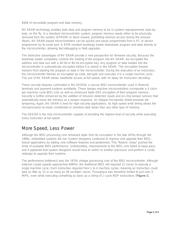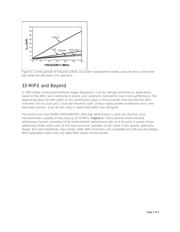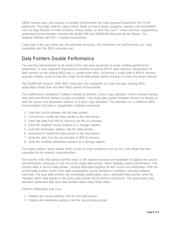下载

Maxim > Design Support > Technical Documents > Application Notes > Microcontrollers > APP 2035
Keywords: 8051 instruction set, high-speed microcontroller, high-performance microprocessor, high
speed micros, 4 clock per machine cycle, 12 clock per machine cycle, reduced power consumption,
bootstrap loader, automatic bank-switching, expanded memory addres
APPLICATION NOTE 2035
The Fast 8051 Microcontroller: Leading the Way in
Growth and Innovation
By: Kevin Self
Jun 29, 2003
Abstract: This article describes how Dallas Semiconductor has improved the traditional 8051
microcontroller, creating high-performance drop-in replacements which execute up to 33MIPs. Additional
features such as multiple data pointers, expanded memory addressing (up to 16MB), and flash memory
increase the speed and usefulness of the device.
System designers know that the microcontroller is the heart of any embedded system—that's where the
action takes place. For over 18 years, Dallas Semiconductor, wholly owned subsidiary of Maxim
Integrated Products, has been redefining the ubiquitous 8051 microcontroller. Perhaps the biggest
improvements in the last 10 years have been made in the speed of instruction execution. Our 1 clock-
per-machine-cycle processors reached a remarkable performance goal—1 clock-per-machine-cycle,
currently at 33 million instructions per second (MIPS). Using this core, our secure, networked, and mixed-
signal 8051-microcontroller families continue to set the standard for feature integration and innovation.
Why base a family of innovative microcontrollers on the venerable 8051 instruction set? Because, quite
simply, it is one of the most popular 8-bit microcontroller architectures in the world. The instruction set is
simple to understand, making it a favorite of embedded system designers. Many of the instructions
directly address I/O pins, allowing quick manipulation (bit-banging) of external peripherals. A tremendous
variety of on-chip peripherals is available in an almost limitless number of combinations. In addition,
development tools for the 8051-microcontroller family are widely available, so it is easy and inexpensive
to start developing an application.
Safe and Secure
In 1987, Dallas Semiconductor/Maxim introduced the DS5000T, an independently developed
microcontroller based on the 8051 instruction and feature set. To offer new features and benefits, our
engineers based the design on NV SRAM technology rather than EPROM. Leveraging its leadership in
low-power technology, the memory partitioning and battery-backup circuitry was integrated directly onto
the microcontroller die. The chief advantage of this system was speed. Writing to most nonvolatile
memories is slow, but NV SRAM can read or write in a single cycle at high speed. This makes it ideal
for high-speed, nonvolatile data-logging applications where data must be captured in real-time. When
combined with an external SRAM and battery, the result is a complete microcontroller system with up to
Page 1 of 9








